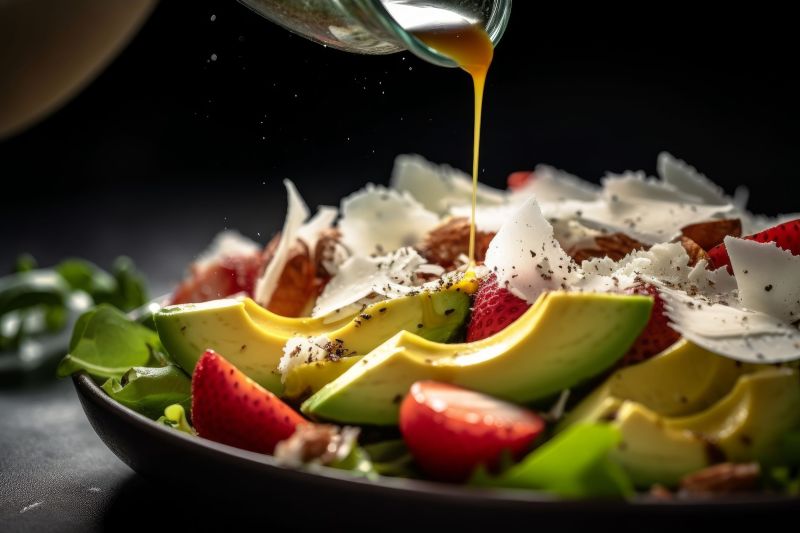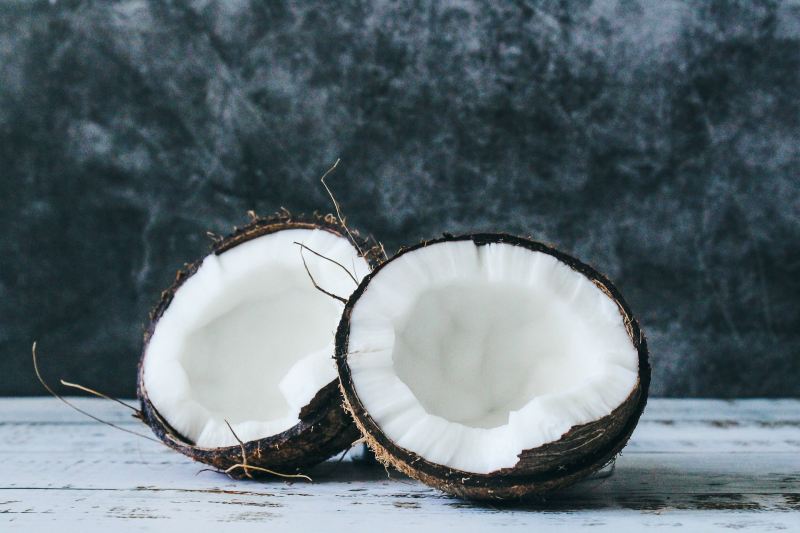
From flavorful Korean-style BBQ short ribs to zesty Chinese beef and broccoli stir-fry, soy sauce is a common potent ingredient. Soy sauce delivers the umami flavor with just the right amount of sweet, sour, and savory to please your palate. When you’re avoiding soy sauce and looking for a healthy, similar-tasting alternative, coconut aminos is an excellent choice. You can replace soy sauce with coconut aminos for your favorite Asian-inspired meals.

What are coconut aminos?
Coconut aminos is a dark coffee-colored seasoning sauce derived from the fermented sap of coconut palm and sea salt. Manufacturers collect the sap or nectar from coconut blossoms — the unopened flower buds of the coconut palm tree. They mix the sap with sun-dried, mineral-rich sea salt and leave it to ferment over time.
It doesn’t taste like coconut and has a similar consistency and color to soy sauce, with a slightly milder and sweeter taste. Coconut aminos is typically used as a condiment, sauce, or marinade and contain a minor amount of natural sugar. Be sure not to confuse coconut aminos with liquid aminos, which is a different product made from soy that’s much higher in sodium.

Is coconut aminos a good alternative to soy sauce?
Many people with certain dietary restrictions, allergies, and medical conditions choose coconut aminos instead of soy sauce because the taste is so close, and it’s non-GMO and gluten-, wheat-, and soy-free. Coconut aminos also have significantly less sodium than traditional soy sauce.
Coconut aminos is a healthy choice for most people, and a coconut allergy is rare. A possible drawback of coconut aminos is that it’s more expensive and less widely available than soy sauce. You should be able to order it online if you can’t find it at a local store.
There are typically only two or three simple ingredients in coconut aminos, for example, organic coconut syrup or nectar and Himalayan salt. On the other hand, soy sauce is often genetically modified (GMO) and usually contains other added ingredients that health-conscious consumers might try to avoid, such as high-fructose corn syrup, wheat and gluten byproducts, artificial food colorings, monosodium glutamate (MSG), and preservatives. In 2018, over 94% of soy in the U.S. was genetically modified. Soy also has high levels of phytic acid, which could impair mineral and nutrient absorption.
Manufacturers make soy sauce by boiling and fermenting soybeans or hydrolyzing them — breaking them down with acid. Most of the soy sauce in the U.S. is hydrolyzed with acid in a synthetic fermentation process to lengthen the shelf life, whereas coconut aminos is naturally fermented.

What are the benefits of coconut aminos?
More research is needed specifically on coconut aminos and the possible effects on human health, but many researchers and health advocates believe coconut aminos carry most of the same proven benefits as the beloved coconut. Coconut aminos is a fermented form of coconut palm tree sap, so they don’t have the same nutritional profile as fresh, raw coconut or other coconut products. Coconut aminos shouldn’t be considered a main source of nutrients, but this sauce can certainly take your dishes to the next level.
Here are some of the numerous purported benefits of coconut aminos.
Heart health
Studies unveil that coconut improves cholesterol and heart health, largely by raising levels of HDL or the “good” cholesterol.
Immune health
Research shows that coconut products rich in antioxidants counteract the harmful effects of free radicals in your body, strengthening your immune system and defense against disease.
Amino acids
Glutamate is one of the naturally occurring amino acids found in coconut aminos and soy sauce. Glutamate is the reason for the umami flavor.
Less sodium
Coconut aminos taste salty and savory, with far less sodium than soy sauce and other condiments.
Gluten-free and non-GMO
Coconut aminos is the go-to alternative for health-conscious individuals because it’s gluten-free, non-GMO, and doesn’t have the same additives or preservatives as soy sauce.

The best ways to use coconut aminos in your kitchen
You can use coconut aminos in pretty much any dish that calls for soy sauce. You may need to use more coconut aminos to get the same intensity as soy sauce. Here are some of the most delicious ways to include this rich sauce in your diet:
- Add it to a beef stew to boost the heartiness and saltiness.
- Mix it with ingredients like balsamic vinegar, lemon juice, and olive oil to make a salad dressing.
- Mix it with your preferred spices and marinade your favorite meats, from chicken to salmon filets and steaks.
- Make a dipping sauce for meatballs, chicken wings, ahi tuna, or sushi.
- Drizzle it on your stir-fry.
- Make a beef jerky.
- Add it to a pot of lentils or beans.
- Stir it into your veggies, sauteed greens, noodles, or rice side dishes.
- Enhance your tofu or vegetarian meals.
- Make Asian-inspired lettuce wraps and ramen bowls.
- Prepare gluten-free Mongolian beef.
- Coat your chicken or pork pot stickers.
- Whip up a pad Thai.
Coconut aminos is a perfectly suitable substitute for traditional soy sauce that can enrapture your taste buds with a tangy, brothy, umami flavor.



